On the elevated High Line park in New York’s Meatpacking District, an older couple lingers around a hulking silver beast with five necks jutting out of its core. The man stands back and takes a photo. A young woman crouches and peers into an illuminated opening shaped like an oversized keyhole, then sticks her phone inside. A trio of tourists slowly walk around the creature, which has scale-like skin made from thousands of used plastic containers. They spot its creator, and ask to take a picture of him with his work.
This is all part of Canadian artist and environmental activist Benjamin Von Wong’s master plan: make eye-catching art that will make people stop, maybe scratch their heads, snap a photo and then, ideally, post it on Instagram or TikTok. Social media then becomes a megaphone for his message: We must reduce our reliance on single-use plastics.
“If we want people to change their behaviours, we can’t just hit them with facts and figures. We also need to hit their hearts,” Von Wong says. “Art creates a sense of curiosity and you can leverage the curiosity to talk about issues.”
Named Single-Use Reflections, the installation was displayed on the High Line for Earth Month from April 5 to 17 – just a blip in the lifespan of plastic bottles, which can take up to 450 years to decompose.
Only a month before, Von Wong was in a Brooklyn studio-shop, sorting through roughly three tonnes of discarded household plastic: laundry detergent containers, soap dispensers, shampoo bottles, face-cream vessels.
With the help of more than 100 volunteers, Von Wong and his crew organized tens of thousands of containers by size, shape and crushability. The plastic pieces – some flattened, others left intact – were tied together with fishing line to form nearly two-metre-long strings and then spray-painted silver. The strings were then wrapped around each neck, which were covered with chicken wire and recycled pallet wrap. A mirror attached to the end of each neck acts as a monster’s head, encouraging the viewer to reflect on their own role in plastic overconsumption – or to take a selfie.
Engineers and fabricators at the design shop SFDS helped Von Wong bring his vision from what he described as “a doodle that looked like a 10-year-old drew it” to a large-scale piece that could withstand April showers and gusts up to 73 kilometres an hour. The night-long installation process was actually delayed by one day because of a torrential downpour and chilly temperatures. (It seems fitting that inclement weather delayed an environmentally themed sculpture in a year when spring came in February and winter was resurrected in April.) The day after it was installed, it survived an earthquake and aftershocks.
Benjamin Von Wong and a crew of volunteers sorted through nearly three tonnes of plastic collected by the Sustainable Fashion Community Center in Manhattan, which let people swap a cleaned container for one piece of donated clothing. The approximately 100 volunteers included high-school students, art enthusiasts, retirees, florists and photographers.
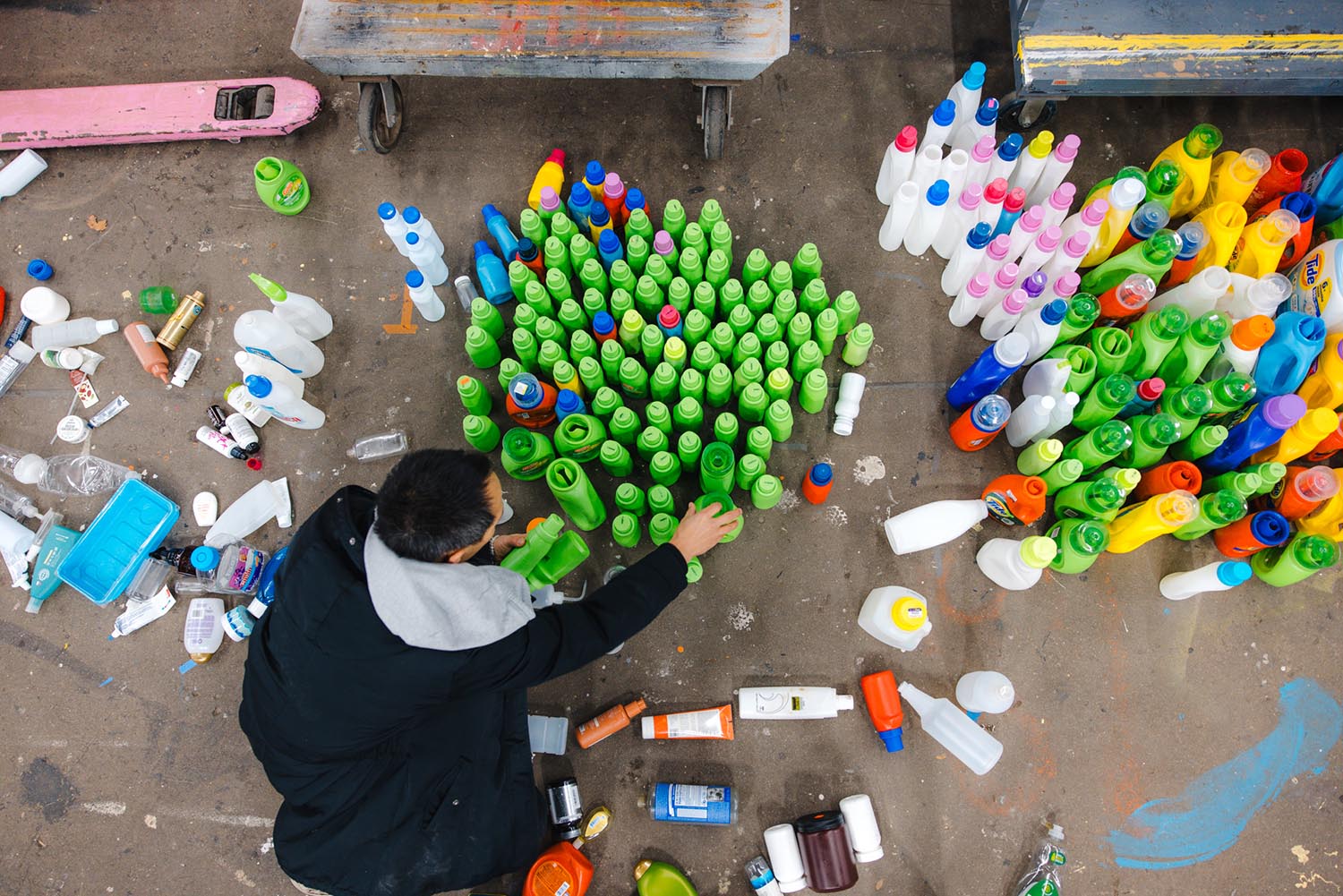
Items were organized by size, type and crushability. Around 1,000 flattened containers were used to create the spiral pattern on the installation’s necks. Holes were drilled into each one, which were then strung together with fishing line. The crew built a number of makeshift gadgets to crush the plastic with a stomp or heavy step.
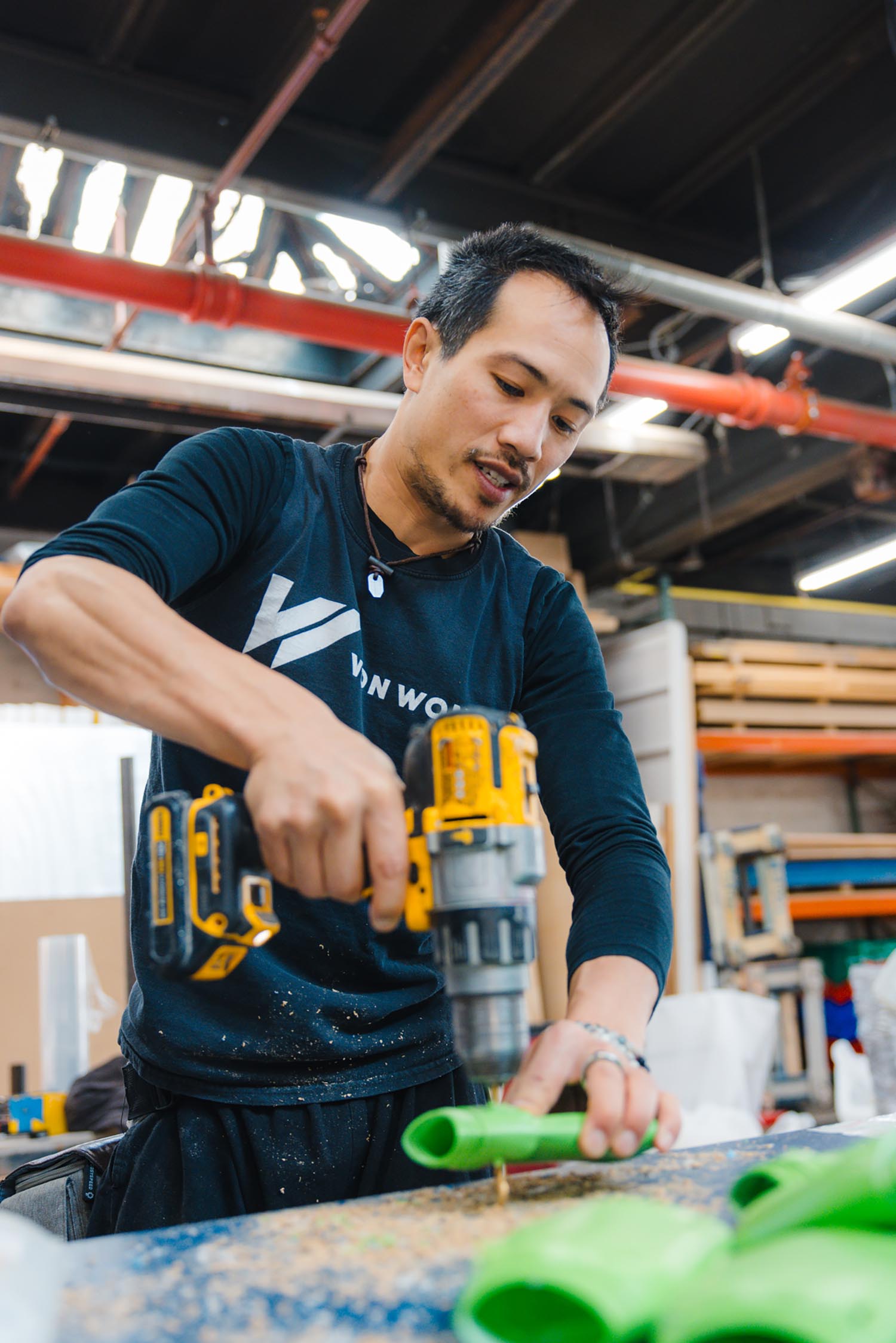
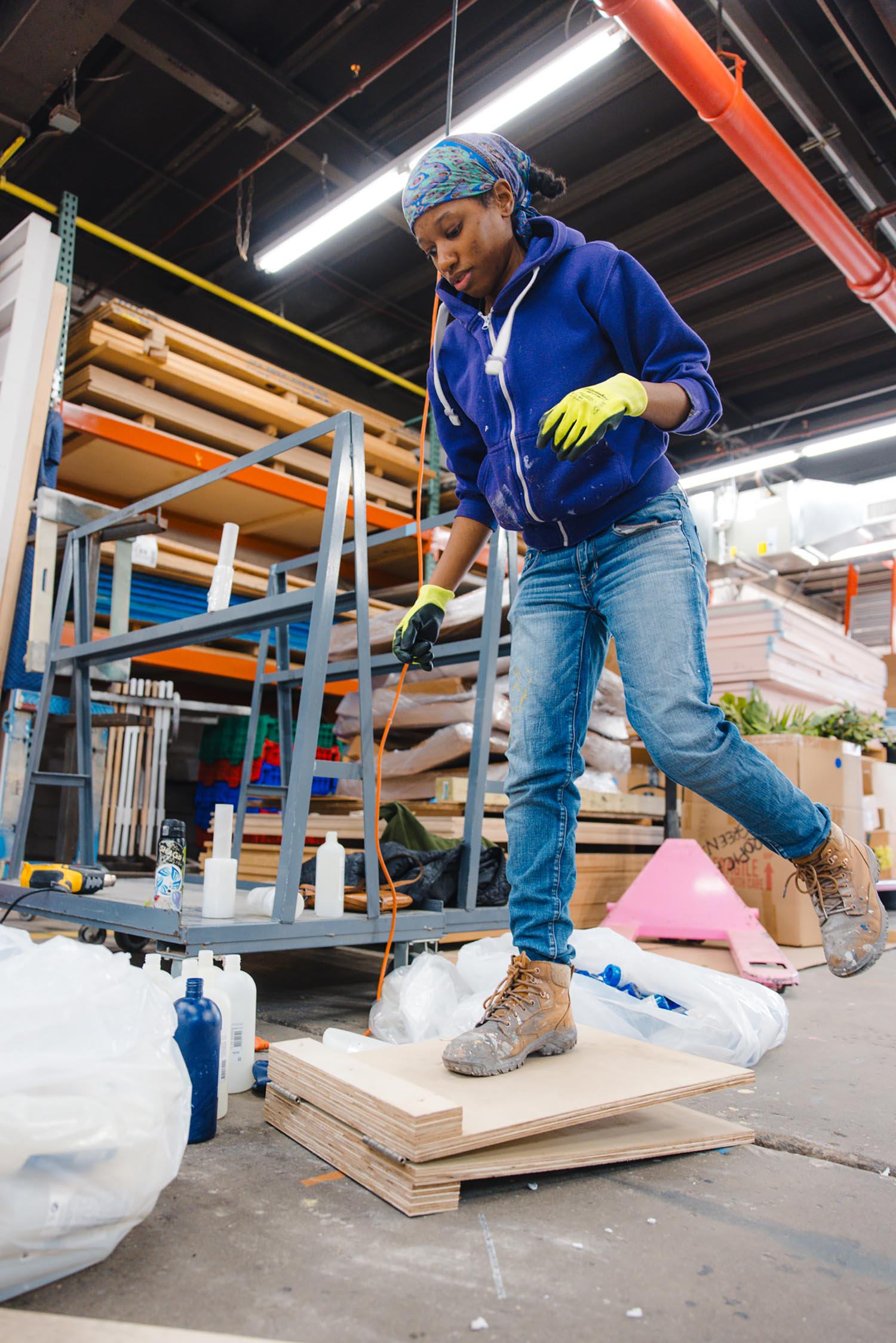
Engineers at the Brooklyn fabrication shop SFDS handled the technical aspects of the installation, including designing the skeleton and ensuring it could be easily disassembled and rebuilt on the High Line. Angled steel pipes and wood circular pieces make up the bones of the necks, which were wrapped in chicken wire and recycled pallet wrap.
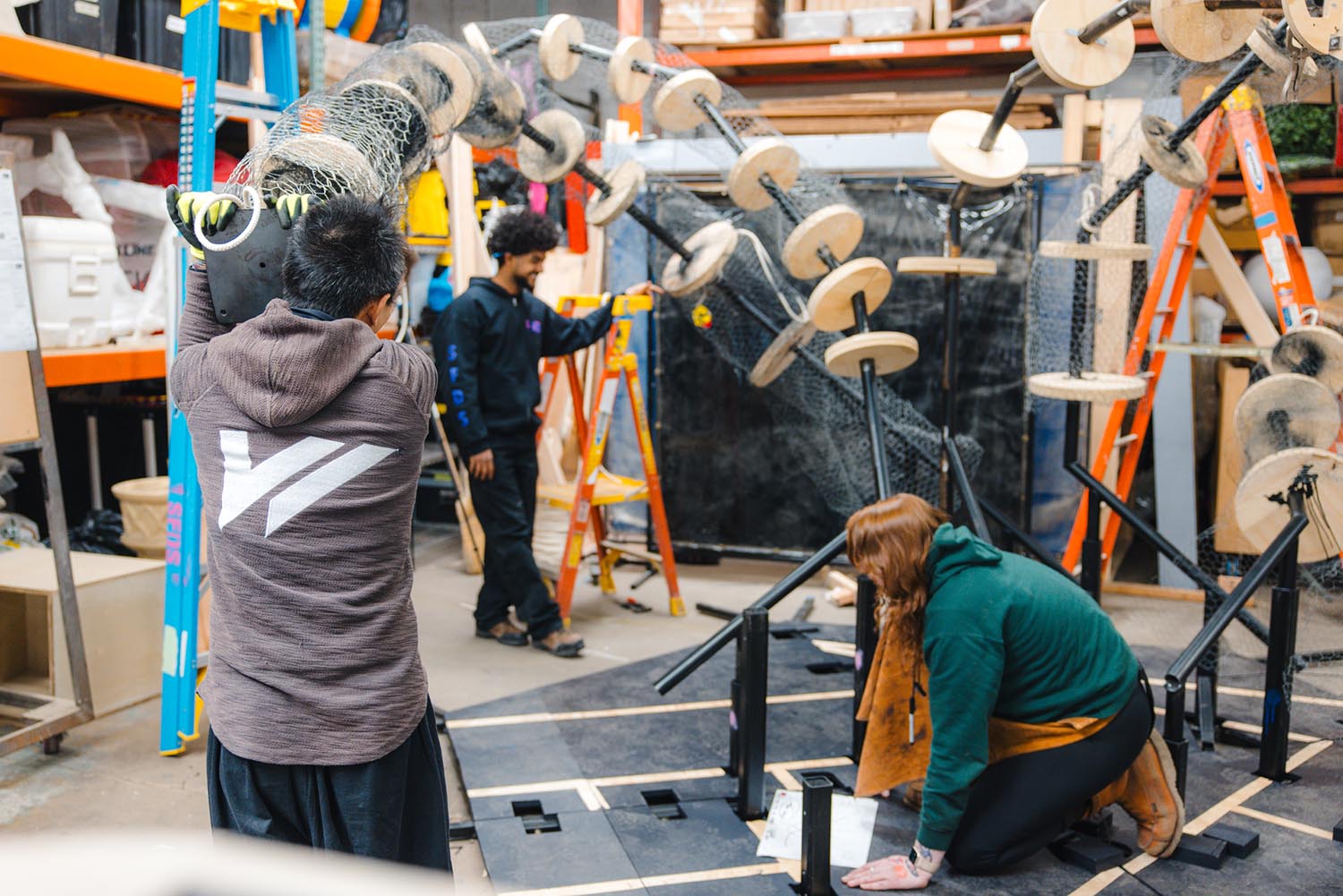
After the plastics were strung together, they were washed and degreased so the paint would adhere better. Von Wong chose to build the installation out of household products, a type of plastic he believes is often overlooked. “When we think about single-use plastics, we only think about food. But it’s everywhere.”
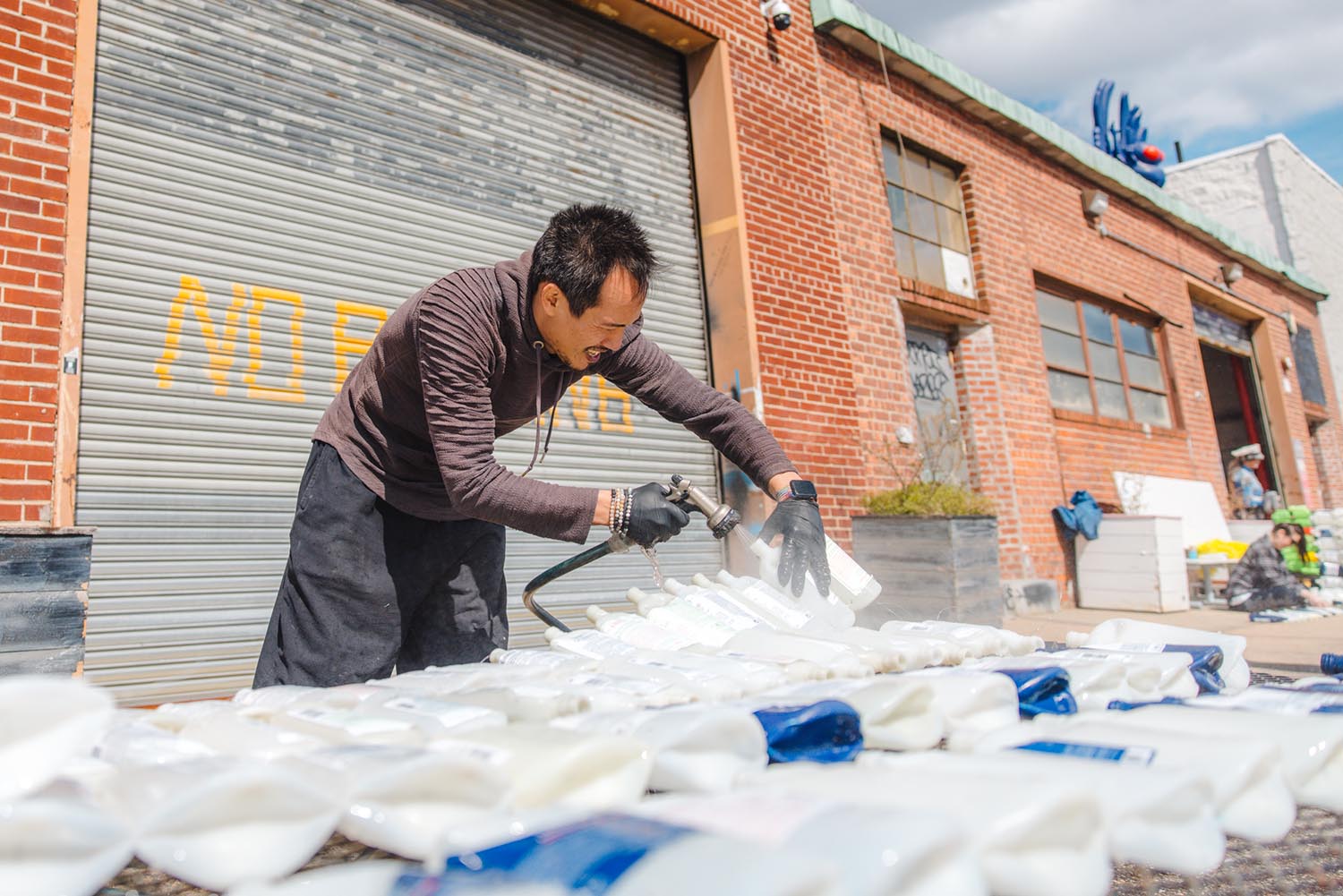
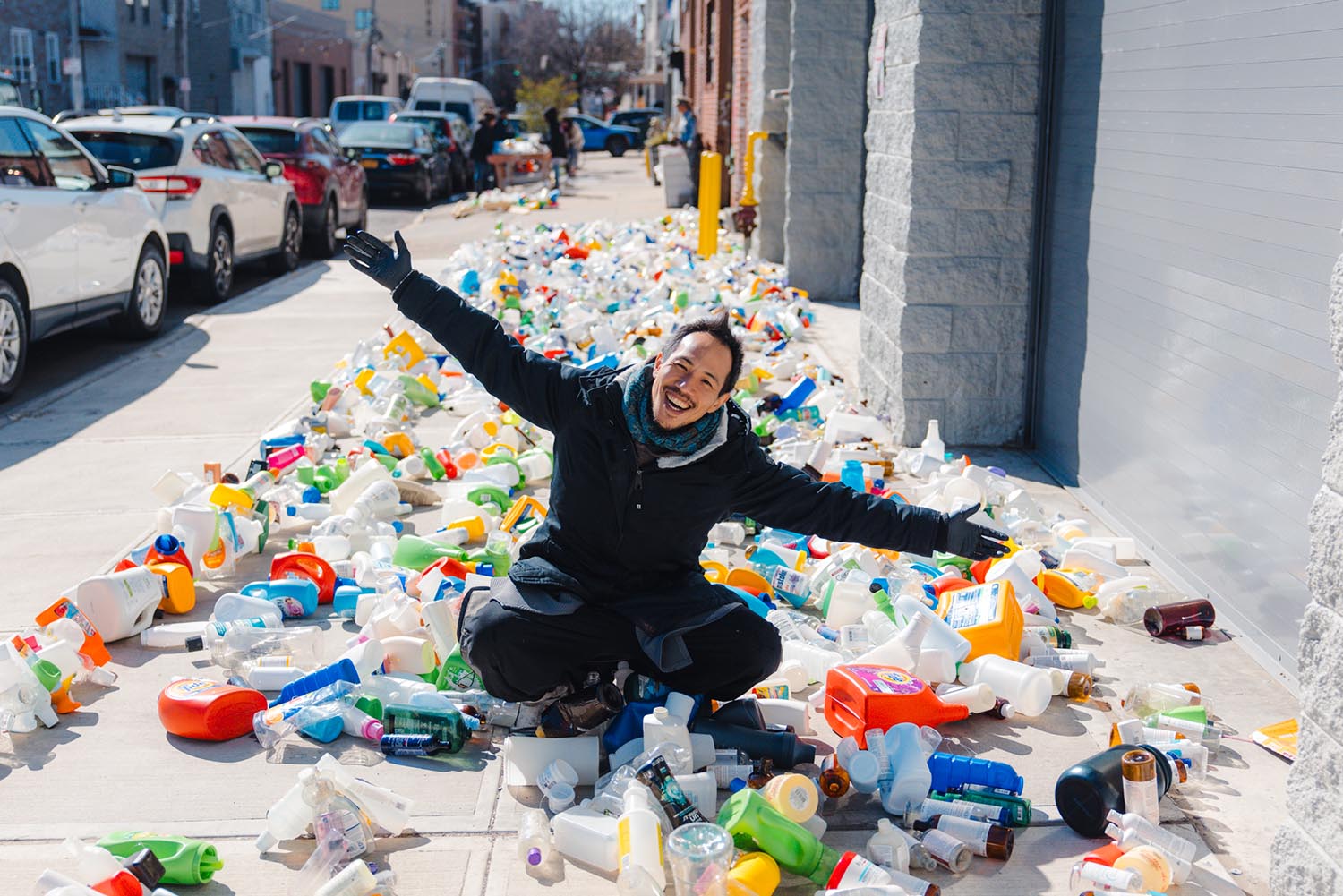
The installation was sprayed with an industrial water-based paint with a clear top coat for durability.
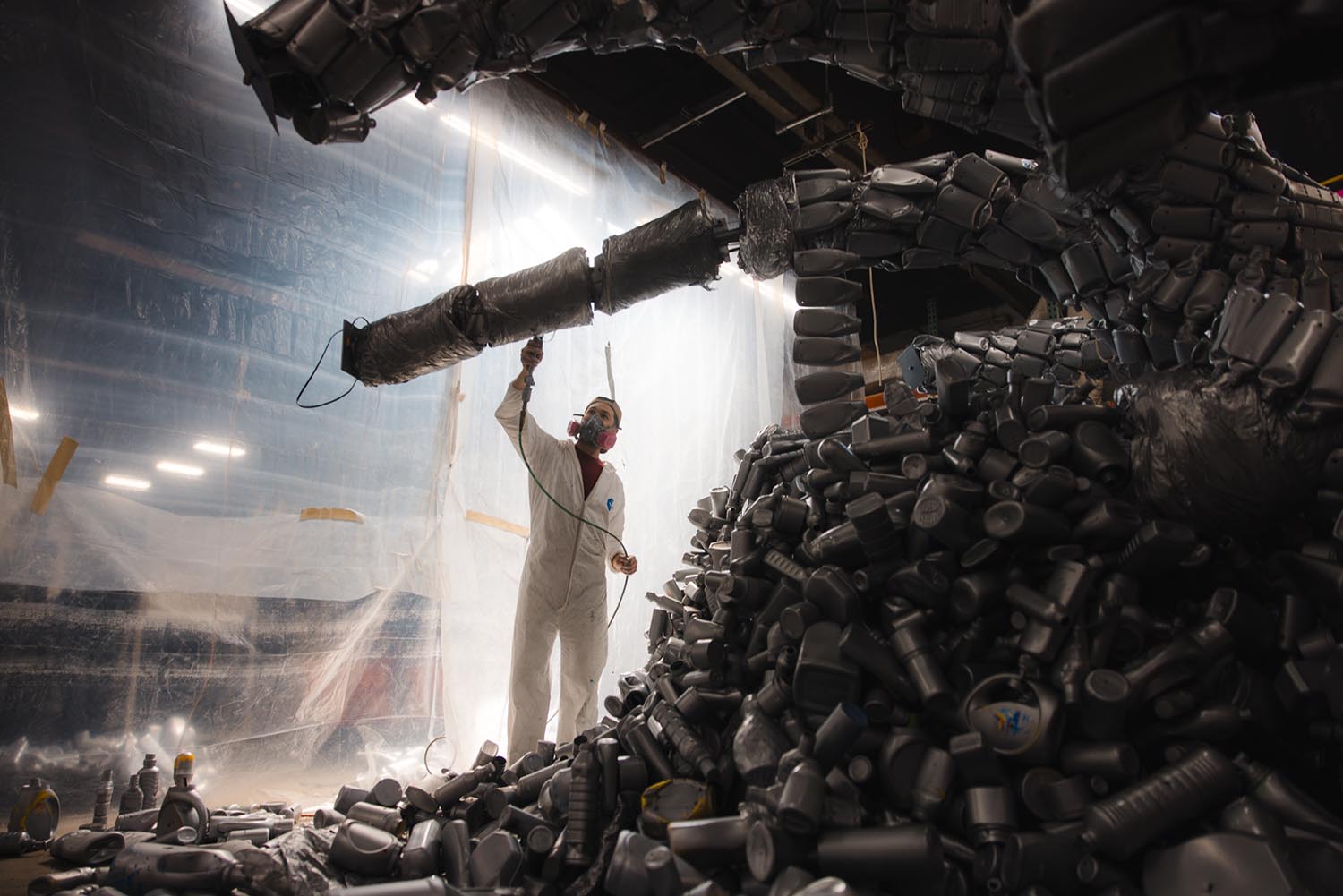
Over three weeks, Von Wong and the volunteers worked from 9 a.m. to 4 p.m., five days a week to finish the installation.
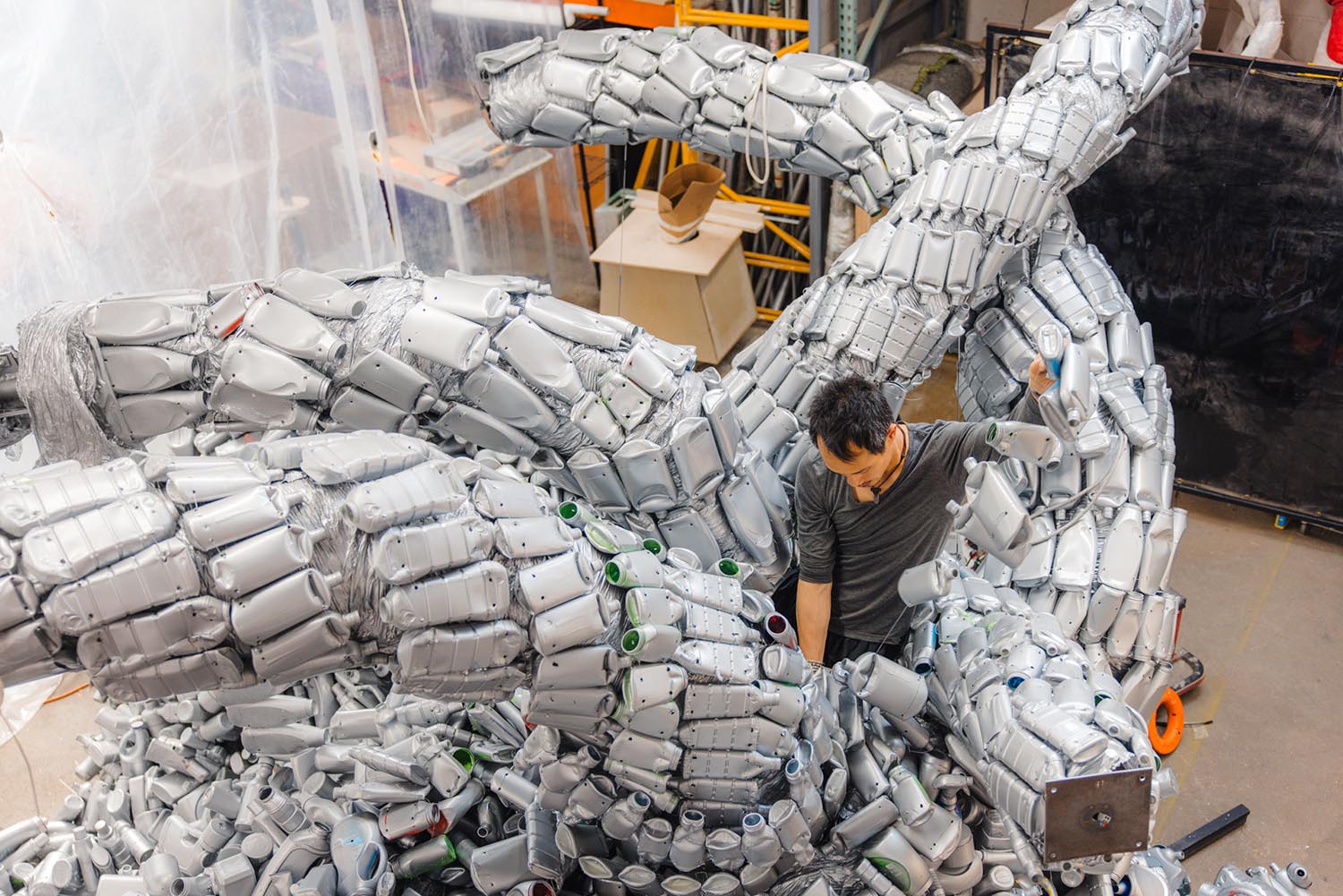
Von Wong designed a diorama, on view inside the installation, of a 1850s-style apothecary with tiny glass bottles. Von Wong says the scene is a reminder of a time ‘before we were all addicted to plastics.’ It is filled with dollhouse furniture painted and decorated by SFDS scenic artists.
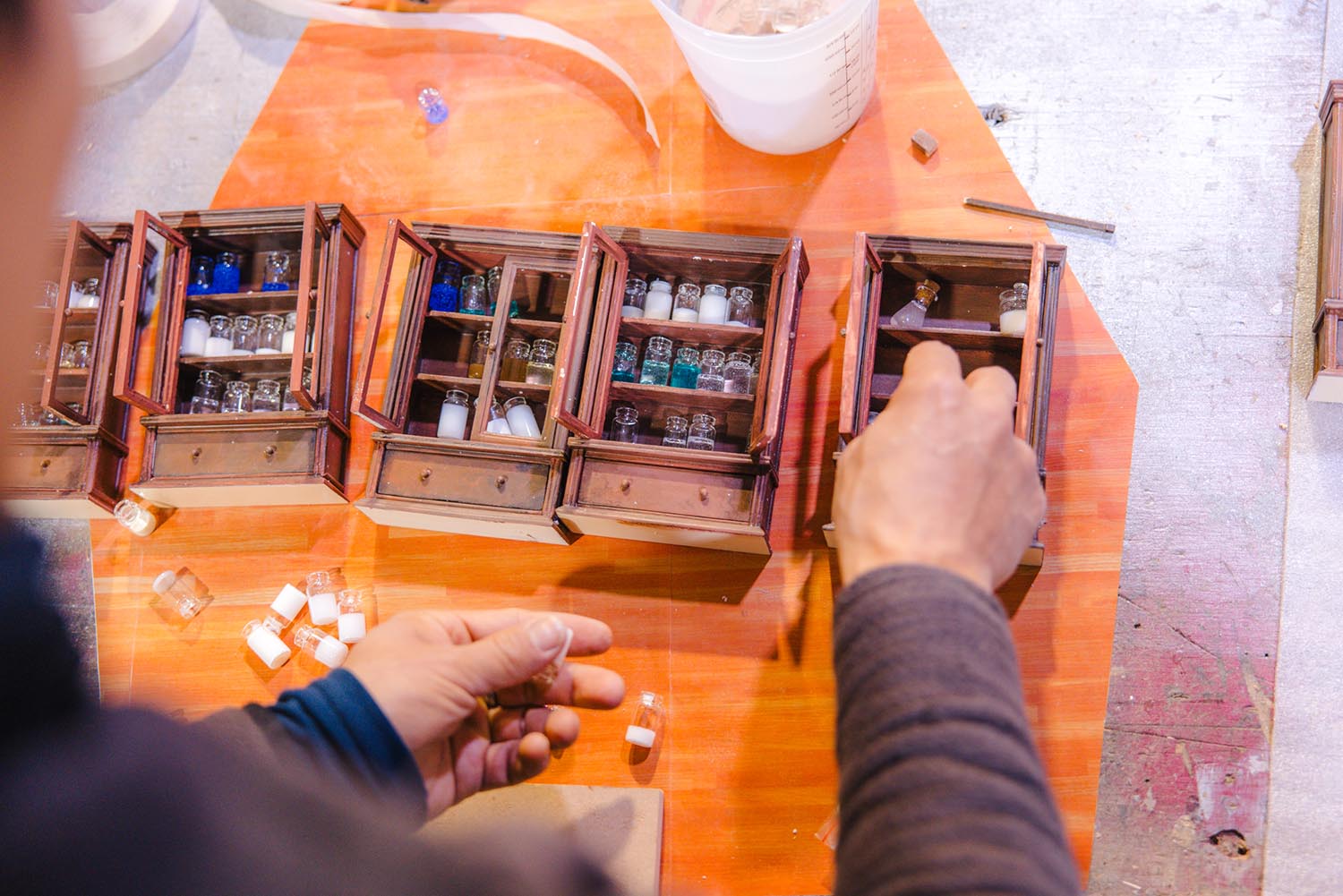
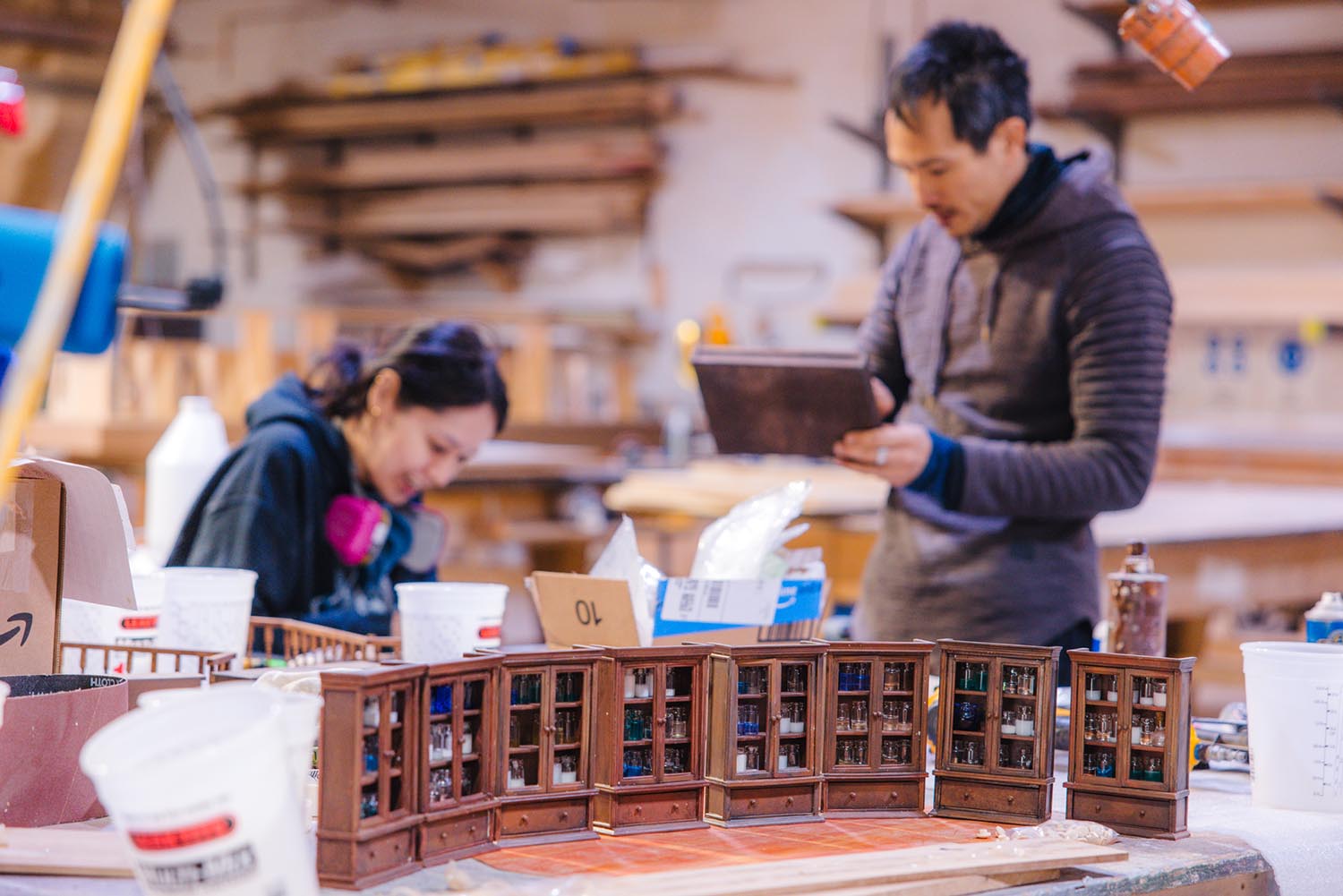
The installation process began around 8 p.m. on April 4. Each section was wrapped in blankets and transported from Brooklyn in a flatbed truck. At the High Line, Von Wong and the installation crew carried the pieces two blocks from a freight elevator to the site, located above the Chelsea Market. The heaviest necks weighed around 32 kilograms each, with the longest one stretching 3.6 metres.
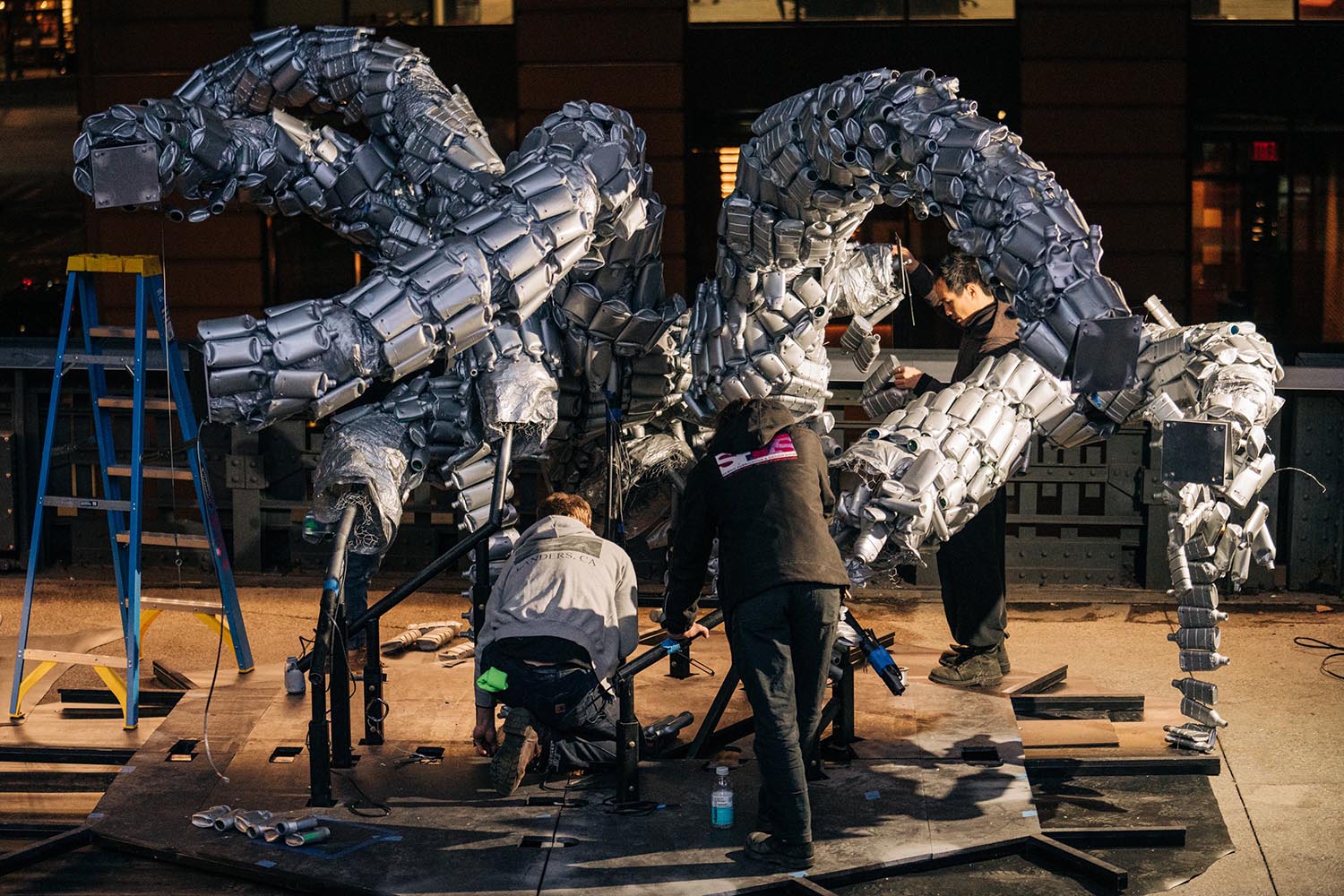
During transportation, some parts were scuffed or broken. Von Wong and an artist from SFDS spent around an hour and a half painting touch-ups, repairing snapped strings and adding bottles to fill gaps. ‘Around 2 or 3 a.m. I was looking for some specific kind of plastic and it turned out someone had forgot to pack it,’ Wong says. ‘Someone had to drive back and get them.’ Around 6 a.m., the installation was finished.
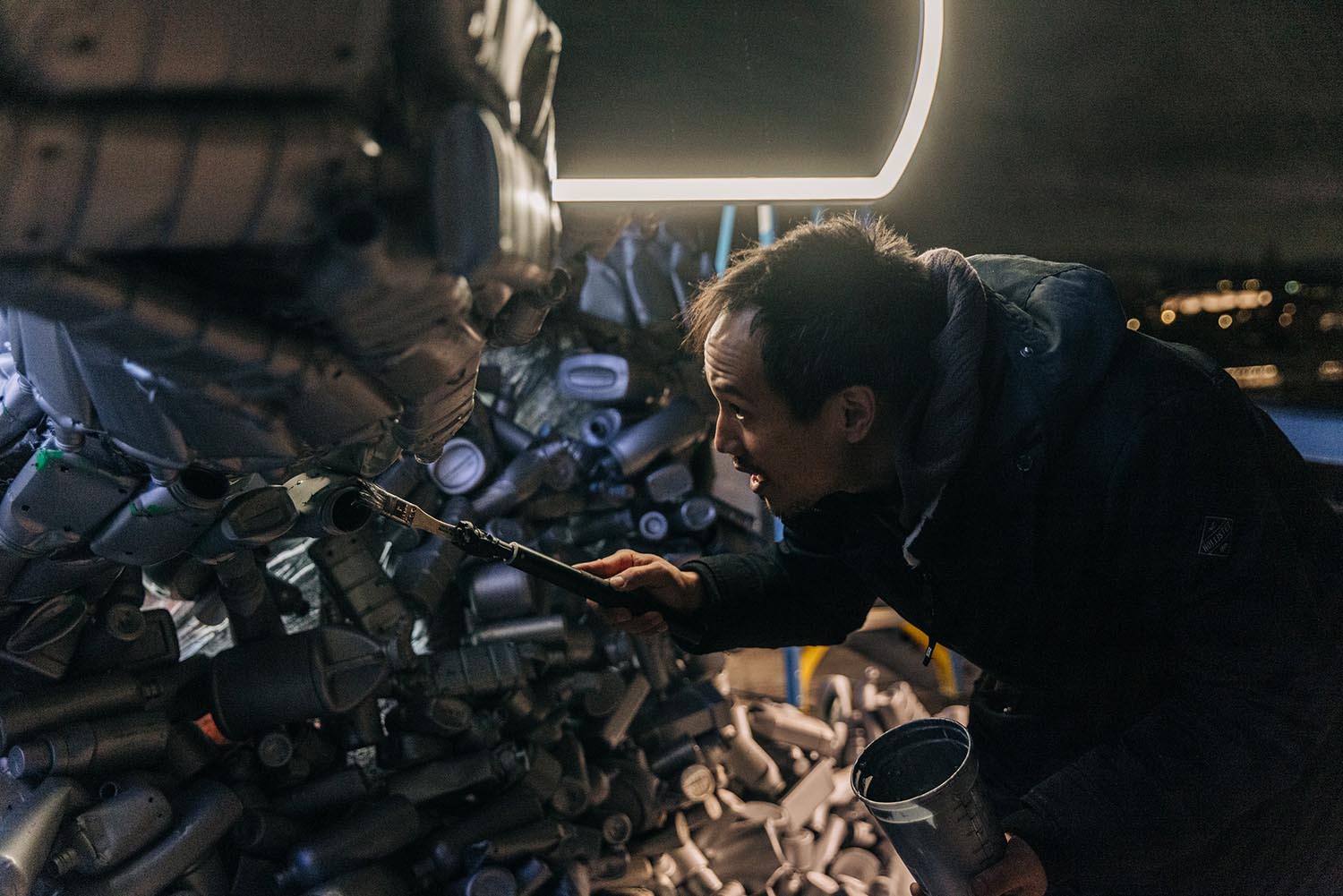
The mirrors, which are made from acrylic sheets and framed with LED lights, encourage passersby to reflect on their own relationship to single-use plastic, Von Wong says. ‘There are so many products inside a bathroom that are presumably supposed to make us beautiful and clean, yet they’re causing damage to the planet.’
The glowing keyhole leads to a view of a miniature apothecary. One of the installation’s necks sways back and forth, triggered by a motion sensor hidden in a bottle.
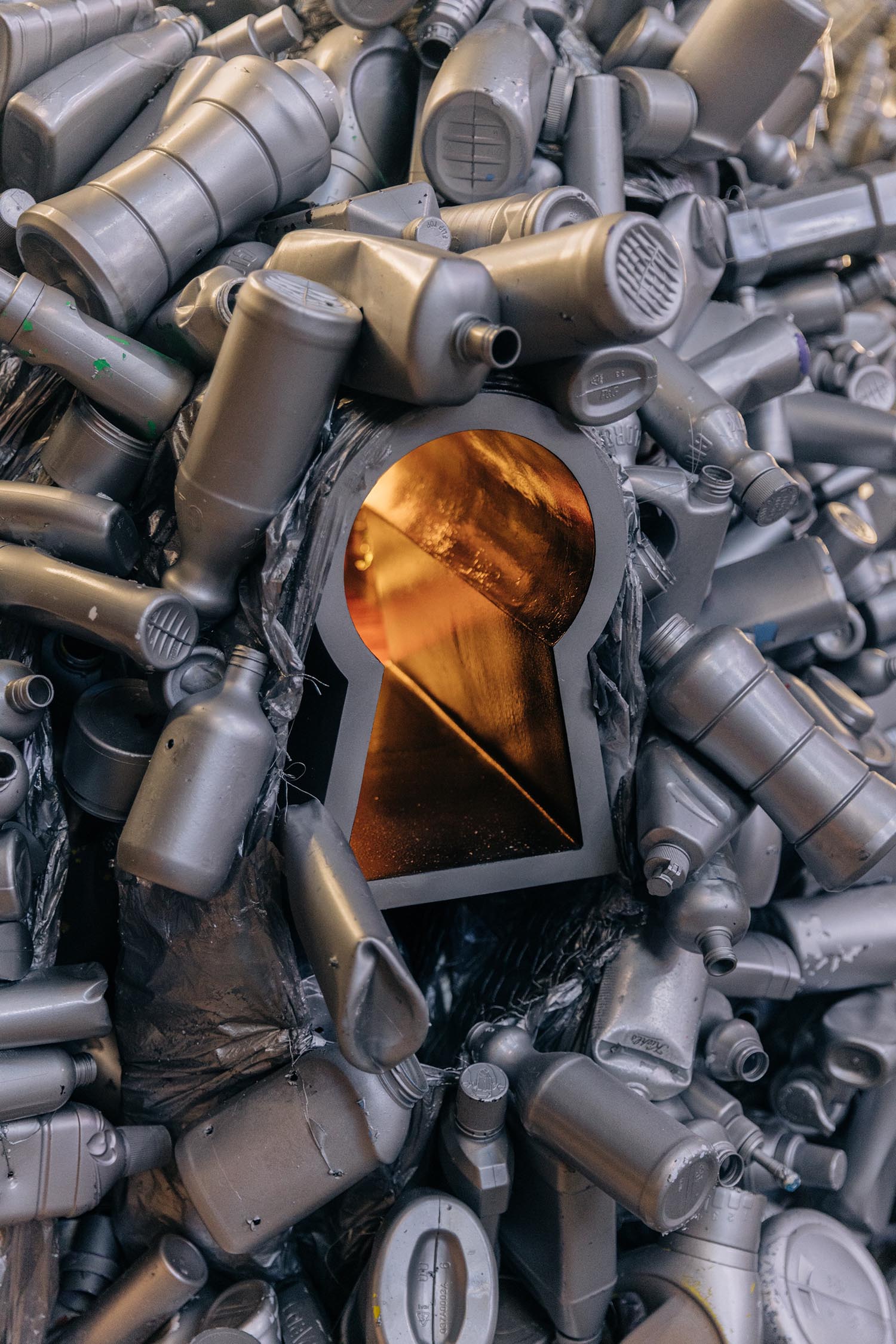
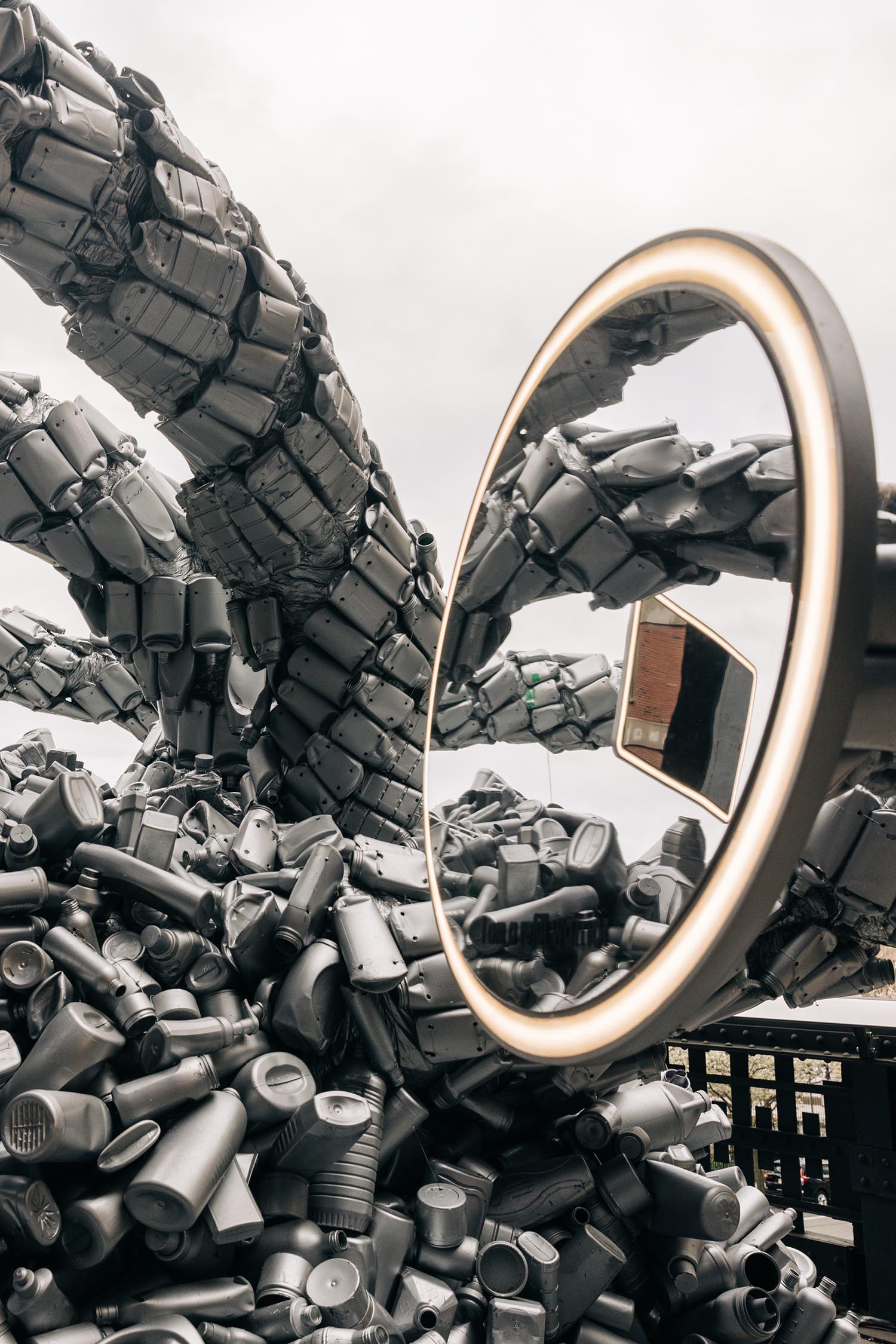
On April 19, Single-Use Reflections was reinstalled at Kearny Point, a new complex of office buildings in New Jersey. ‘Nothing is truly ever permanent, but it will live for maybe five or 10 years,’ Von Wong says. ‘For what was destined to be used for a short period of time and now it’ll be used for years and years, that seems like a healthy end of life for these products.’
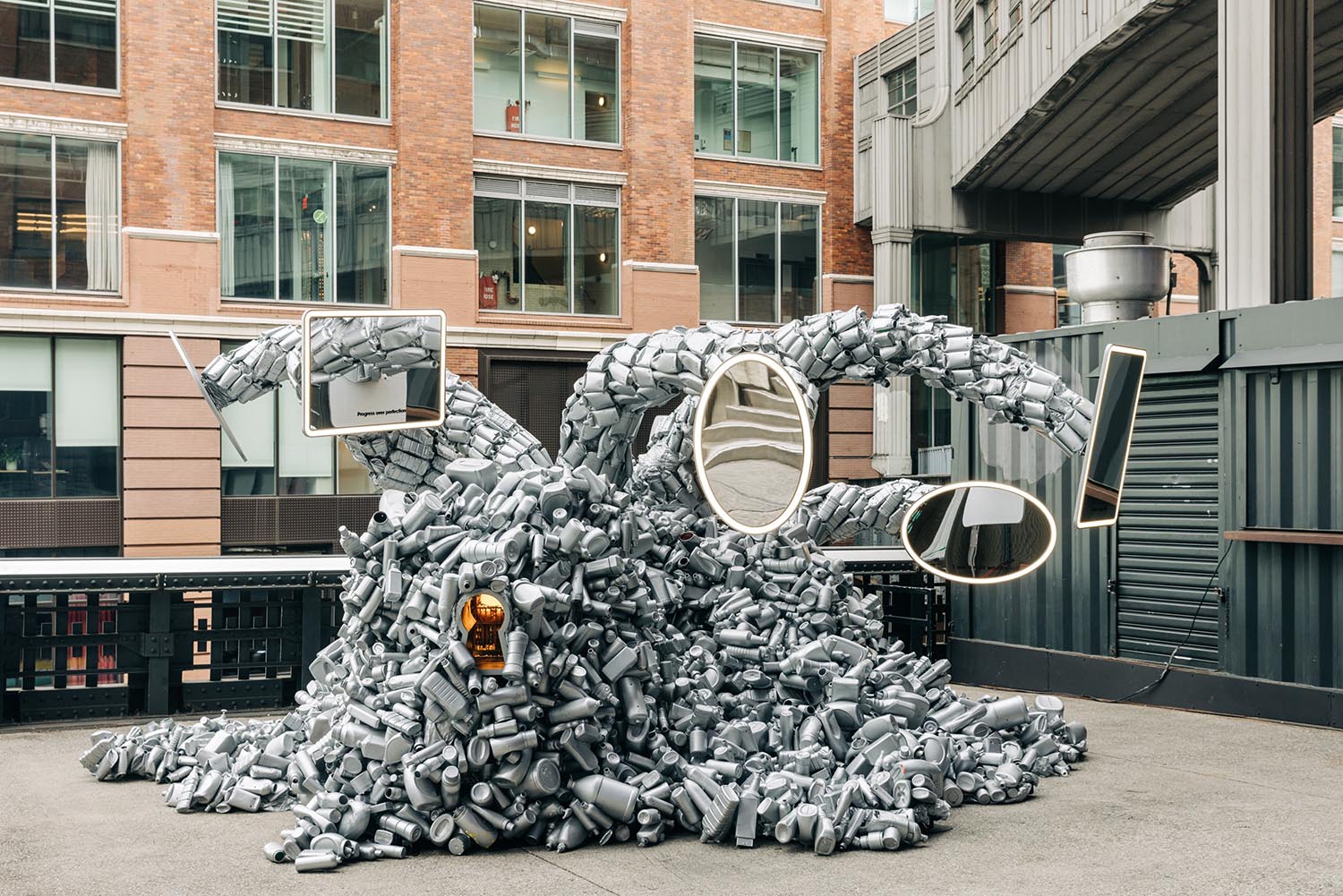
Von Wong calls himself an “unwilling environmentalist.” After feeling unfulfilled as a hard-rock mining engineer, he picked up a camera, eventually quitting his day job to undertake photography full-time. He started focusing on environmental issues after he read about the Great Pacific Garbage Patch, a gyre of microplastics scattered across 1.6 million square kilometres of ocean between Hawaii and California.
His previous installations include giant waves made out of plastic straws and a tap spewing out nine metres of plastics, which will be on display in Ottawa from April 21 to 29 for the United Nations negotiations on plastic pollution. He also built a postapocalyptic throne surrounded by discarded circuit boards and keyboards, now permanently installed in the Well shopping complex in downtown Toronto. He photographs all his works in a fantastical vivid style.
For the High Line sculpture, Von Wong received some empty containers from the skin-care brand Kiehl’s, which sponsored the installation as part of its refillable products campaign. The artist has no qualms with corporate partnerships: He worked with Starbucks Vietnam when it phased out straws and with Dell to help promote its e-waste recycling program. He says he’ll work with any company as long as the message isn’t greenwashing.
“I definitely lead with the art first. But I’m always thinking about it from the perspective of, like, how can I acquire the resources necessary to create art that can make a meaningful difference?”
Single-Use Reflections was inspired by the Greek legend of the Hydra, a serpentine water monster with multiple heads. For every head that was cut off, two more would regrow. “The single-use plastic problem feels exactly like that,” Von Wong says. “You can ban one product and two more will pop up. You can regulate one thing, but then there will be a loophole somewhere else.”
About a year ago, Von Wong had a crisis of faith. “I contemplated a career switch because I was like, oh my gosh, it doesn’t matter how much I’m doing, it feels like nothing is ever enough and that it’s not making any difference in general.”
To combat this feeling of climate anxiety, he’s taking a decidedly optimistic viewpoint through his work. That’s why a glowing keyhole in the belly of the Single-Use Reflections leads to a miniature, old-timey apothecary with shelves of bottles meant to remind people that household product containers can be reused.
“Refillables won’t solve all single-use plastic problems, but they are an effective tool, especially in high-density cities,” Von Wong says.
He next wants to work with materials that can improve the environment, such as biochar, a porous material made from leftover plant waste that can help trap carbon in soil, or kelp, which can help sink carbon to the ocean floor.
While hanging out around his installation, which he did for a few hours every day, Von Wong met someone who creates sustainable biopolymers that can trap carbon. He is getting samples, he said, and wants to experiment.
“I’m tired of only focusing on problems, and I want to also start on solutions.”



